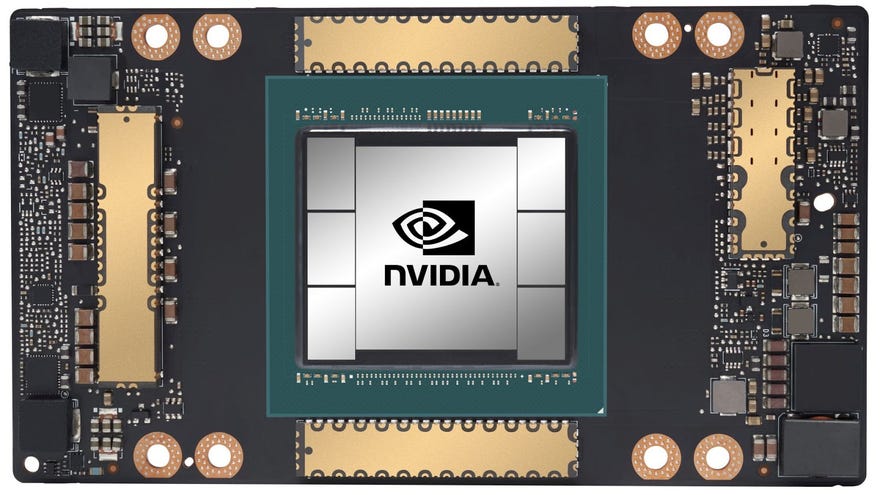Everything you need to know about Nvidia's Ampere GPU reveal from GTC 2020
Amping it up
Nvidia didn't announce the hotly rumoured RTX 3080 today, but they did reveal where their new Nvidia Ampere GPU architecture will be landing first - and that's in their new A100 data centre GPU. The A100 system board is that giant graphics card Nvidia CEO Jensen Huang's had stashed away in his oven the past couple of days, and features eight GPUs connected by NV Link, over 30,000 components and weighs a whopping 50lbs. Still, while we didn't get to see any of Nvidia's RTX 3000 GPUs, there was plenty of good Ampere chat that followed, and it could mean big things for your next GeForce RTX card. Here's everything you need to know.
Nvidia Ampere GPUs will be 7nm
One of the key points from Nvidia's nine-part GTC keynote today is that they'll use a 7nm manufacturing process much like AMD's existing crop of Radeon RX 5000 GPUs. The A100, for example, has 54 billion transistors on it, making it the world's largest 7nm processor.
Previously, Nvidia's Turing-based RTX cards used a 12nm manufacturing process, so shifting down to 7nm should bring with it quite the leap in performance.
3rd Gen Tensor cores mean better ray tracing and DLSS
The A100 will have 3rd Gen Tensor cores for even faster and more efficient AI learning and scaling, Nvidia said. In the A100, those 3rd Gen Tensor cores will be using a new math format called TF32 as well, which aims to accelerate the amount of AI training it can do out of the box. Of course, while it's highly likely that Nvidia's GeForce RTX 3000 GPUs will use this as well, we won't know for sure until Nvidia give us some more concrete information,
Still, the strides being made in AI technology and the ability to scale up low res images with the depth and clarity of much higher resolution assets was a big topic in Nvidia's GTC keynote today, and they made a new RTX and DLSS 2.0 demo to prove it. This wasn't running on an A100 GPU, admittedly (just one of Nvidia's Quadro RTX 8000 GPUs), but it still gives us a flavour of where ray tracing and Nvidia's DLSS tech is heading and what might be possible when RTX 3000 GPUs start arriving.
Multi-instance GPUs have arrived
One of the more intriguing features of Nvidia's Ampere architecture is a new feature called MIG, which stands for Multi-Instance GPU. MIG is still very much aimed at data centres and server-level stuff, but the key takeaway is that it can turn one GPU into several GPUs, partitioning itself to allow for a much higher throughout of data overall.
In the A100, it can partition itself off into as many as seven independent GPUs simultaneously, each with its own memory, cache and streaming multiprocessors. It effectively allows you to get more done on a single, physical GPU, albeit one trapped in a server rather than potentially inside your home PC. Still, if the ability exists, then it could mean that Ampere RTX GPUs will be able to chew through game data in smaller, more efficient chunks rather than trying to stuff it all down a single food pipe, so to speak. We won't know for sure until Nvidia hold a proper RTX event.
That's largely all that Nvidia had to say about their Ampere GPU architecture today. I mean, technically they have loads to waffle on about in their Ampere deep-dive, but the points I've outlined above are really the only important things we need to know as PC peeps right now. Still, with Ampere officially unveiled now, we'll no doubt be hearing more about Nvidia's RTX 3000 line-up over the coming months, so watch this space for more info on their next gen graphics cards.


